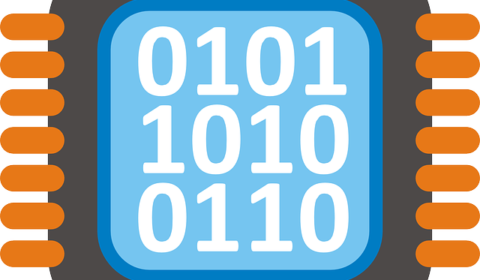Disk Scheduling Algorithms with Examples
Relatively speaking, retrieving data from hard disk drivers is always slow compared to CPU and memory access due to the mechanical nature of the magnetic disk. Disk arm movement is very expensive operation therefore operating systems use disk scheduling algorithms to reduce seek time. Below you can find a summary of some of the well known disk scheduling algorithms. The algorithm receives a queue of request positions (track numbers) and the current head position. The output of the algorithm is the order in which the requests are serviced.

First Come First Serve (FCFS)
-
- Requests are serviced in the order in which they arrive
- The algorithm is easy to implement
- Bad algorithm as it may involve lots of unnecessary seek distance
Here is an example assuming we have 200 cylinders:
|
1 2 3 4 5 6 |
Queue: 100, 175, 51, 133, 8, 140, 73, 77 Head: 63 Seek order: 100, 175, 51, 133, 8, 140, 73, 77 Seek distance = (100-63) + (175-100) + (175-51) + (133-51) + (133-8) + (140-8) + (140-73) + (77-73) = 646 |
Shortest Seek Time First (SSTF)
-
- Service request with the shortest seek time from the current head position
- May starve some requests
- Good algorithm for a small list of requests
Here is an example:
|
1 2 3 4 |
Queue: 100, 175, 51, 133, 8, 140, 73, 77 Head: 63 Seek order: 73, 77, 51, 8, 100, 133, 140, 175 Seek distance = 10 + 4 + 26 + 43 + 92 + 33 + 7 + 35 = 250 |
Scan or Elevator Algorithm
-
- Disk arm starts at one end of the disk and moves towards the other end
- It services the requests as it moves then reverses the direction when it hits the other end
- Scan algorithms are good for heavy loads and more fair
Here is an example:
|
1 2 3 4 |
Queue: 100, 175, 51, 133, 8, 140, 73, 77 Head: 63 Seek order: 51, 8, 0, 73, 77, 100, 133, 140, 175 Seek distance = 12 + 43 + 8 + 73 + 4 + 23 + 33 + 7 + 35 = 238 |
C-Scan
-
- Similar to scan algorithm but the head returns to cylinder 0 when it reaches the end of the disk
- Treats the cylinder list as a circular list that wraps around the disk
- Waiting time is more uniform for cylinders near the edge of the disk
Here is an example:
|
1 2 3 4 5 |
Queue: 100, 175, 51, 133, 8, 140, 73, 77 Head: 63 Seek order: 73, 77, 100, 133, 140, 175, 199, 0, 8, 51 Seek distance = 10 + 4 + 23 + 33 + 7 + 35 + 24 + 199 + 8 + 43 = 387 |
C-Look
-
- Similar to C-Scan but the head only travels as far as the last request in each direction
Here is an example:
|
1 2 3 4 5 |
Queue: 100, 175, 51, 133, 8, 140, 73, 77 Head: 63 Seek order: 73, 77, 100, 133, 140, 175, 8, 51 Seek distance = 10 + 4 + 23 + 33 + 7 + 35 + 167 + 43 = 322 |
Summary
Here is a tabular summary of what we have mentioned:
| Algorithm | Properties |
|---|---|
| First Come First Serve (FCFS) | Requests are serviced in the order in which they arrive Easy to implement May involve unnecessary seek distance |
| Shortest Seek Time First (SSTF) | Service request with the shortest seek time from the current head position May starve some requests Good for a small list of requests |
| Scan or Elevator Algorithm | Disk arm starts at one end of the disk and moves towards the other end It services the requests as it moves then reverses the direction when it hits the other end Good for heavy loads and more fair |
| C-Scan | Head returns to cylinder 0 when it reaches the end of the disk Treats the cylinder list as a circular list that wraps around the disk Waiting time is more uniform for cylinders near the edge of the disk |
| C-Look | Similar to C-Scan but the head only travels as far as the last request in each direction |
Disk scheduling algorithms PDF
You can find this article in PDF format here
Please use the comments section below for questions, corrections or feedback. Thanks for reading.
About Author
Mohammed Abualrob
Software Engineer @ Cisco





SSTF And SCAN Answers are wrong.
SSTF = 279
SCAN = 230
thanks , you prove I am right i have found two different sources that gives the wrong answer and thought that i am the wrong ..
thanks
please MR Mohammed Abualrob fix this issue